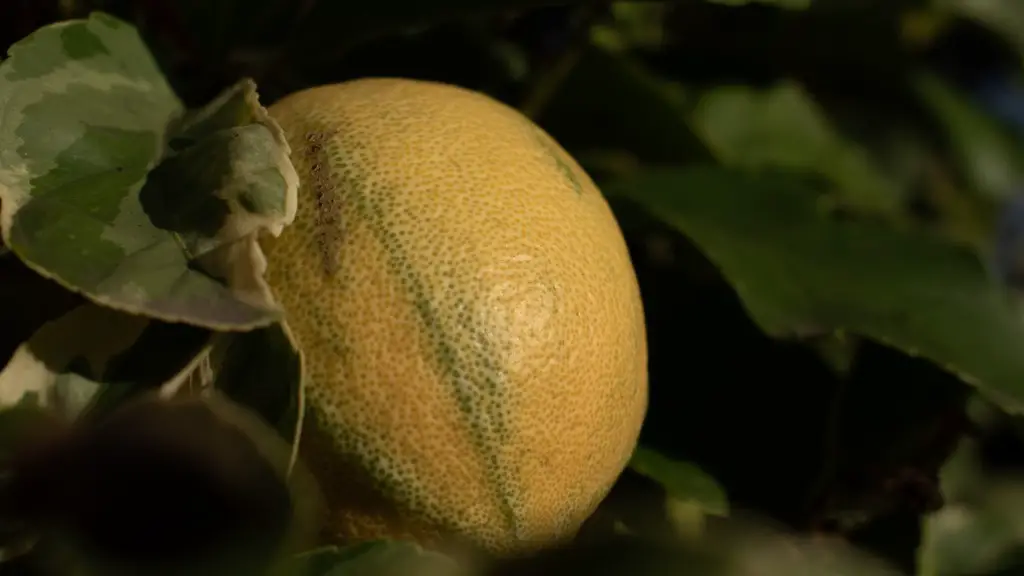Introduction to Avocado Production
Avocado trees are one of the most popular and highly prized fruits in the world, from the kitchen of the gourmet chef to the humble avocado toast of the college student. Growing an avocado tree is no doubt a great idea, as it has numerous benefits. Not only does it produce a delicious and nutritious fruit, it’s also aesthetically appealing and has low-maintenance requirements.
Avocado trees are native to Central and South America, and have been cultivated for centuries. They are a type of evergreen tree and will bear fruit once they reach three to five years of age. What’s more, if taken care of properly, an avocado tree can provide you with a lifetime of delicious fruit.
Site Selection and Planting Instructions
When selecting where to plant your avocado tree, it is important to take into consideration the tree’s size. Avocado trees can grow up to 25 feet in height and 20 feet in width if left unpruned. Selecting the right spot is critical, as you don’t want to impede any existing structures or plants. It is best to select a site with well-drained, light soil and plentiful sunshine.
Container-grown trees are best for those with limited space, as the top of the tree can be kept pruned to size. If you have more space, you can plant a full-grown tree and reap the rewards in a much shorter time.
Once you have selected your site, you’ll need to dig a hole twice the size of the root ball. Planting in mulch or compost is also beneficial for retaining moisture. After planting, water your tree deeply every week until it is established.
Fertilizing and Pruning
Avocado trees tend to be heavy feeders and need plenty of fertilizer and micronutrients to thrive. When your tree is still young, use a slow-release fertilizer that’s high in nitrogen and phosphorus. Fertilize mature trees with a fertilizer blend that’s high in calcium and magnesium.
Regular pruning is also vital to help an avocado tree produce more fruit. You should prune your tree before the fruiting season begins, making sure to remove any dead, diseased, or overgrown branches. Remove any branches that are lower than three feet from the ground. Always use sharp pruning shears to make sure the cuts are clean and smooth.
Watering and Irrigation
Avocado trees require a deep, steady supply of water in order to produce fruit. Once your tree is established, you should water it deeply once per week, making sure the water soaks through the top 12 inches of soil. In the hot summer months, you may need to water more frequently.
You should also consider the use of an irrigation system. An automated system will make sure your tree gets the right amount of water on a regular basis. This is particularly helpful if you are away from home for long periods of time.
Pollination and Harvesting
Avocado trees will require cross-pollination in order to produce fruit. Most trees are self-unfruitful, meaning you will need to have more than one tree in order for them to bear fruit. It is best to plant two or more varieties of avocado trees in order to get the best results.
You’ll also need to keep an eye on your avocado tree and harvest the fruit as soon as they are ripe. If left on the tree too long, the avocados will become overripe and unattractive. To determine if an avocado is ready to be harvested, gently squeeze it. If it yields to pressure, it’s ready to be picked.
Pest and Disease Control
Avocado trees can be susceptible to pests and diseases. Regular inspections should be carried out to check for any signs of an infestation or disease. A primary focus should be to make sure ants are kept away from the tree as they can attract other pests. If you notice any early signs of an infestation, you should act quickly and take the necessary preventative measures to keep it under control.
The most important thing is to stay vigilant and watch for any signs of an infestation or disease. Early detection and swift action can help prevent an infestation and save your tree.
Fruiting Stimulation and Harvest
Avocado trees will not start to produce fruit until they are at least three to five years of age. For this reason, it is important to be patient and to properly care for your tree in the early years. Regular fertilizing, pruning, and watering will go a long way in providing the nutrient-rich environment your tree needs to start producing fruit.
Once your tree is established and bearing fruit, it is important to harvest the avocados at the correct time. If harvested too early, the avocados will not be ripe and will not taste good. If harvested too late, the avocados will be overripe and unpalatable. The trick is to find the optimal time for harvesting.
Yield Expectation and Final Thoughts
For good production, avocado trees need plenty of sunshine and water, and must be free from pests and diseases. It is also important to fertilize your tree regularly and perform pruning to encourage fruiting. With the right care, you can expect your tree to bear anywhere from ten to 100 kilograms of fruit per year.
Getting an avocado tree to produce fruit is no small feat. It involves careful planting, steady watering, and regular upkeep. By following these steps, however, you will be well on your way to harvesting your own delicious avocados.


